Author Archives: Ajitesh Kumar
Starting on Analytics Journey – Things to Keep in Mind

This post highlights some of the key points to keep in mind when you are starting on data analytics journey. You may want to check a related post to assess where does your organization stand in terms of maturity of analytics practice – Analytics maturity model for assessing analytics practice. In the post sighted above, the analytics maturity model defines three different levels of maturity which are as following: Challenged Practitioners Innovators At whichever level you are in terms of maturity of your analytics practice, it may be good idea to understand the following points to come up with data analytics projects. Believe that a lot of prior work is required …
MIT Free Course on Machine Learning (New)

In this post, the information regarding new free course on machine learning launched by MIT OpenCourseware. In case, you are a beginner data scientist or ML Engineer, you will find this course to be very useful. Here is the URL to the free course on machine learning: https://bit.ly/37iNNAA. This course, titled as Introduction to Machine Learning, introduces principles, algorithms, and applications of machine learning from the point of view of modeling and prediction. It includes formulation of learning problems and concepts of representation, over-fitting, and generalization. These concepts are exercised in supervised learning and reinforcement learning, with applications to images and to temporal sequences. Here are some of the key topics for which lectures can be found: …
Gradient Boosting Regression Python Examples
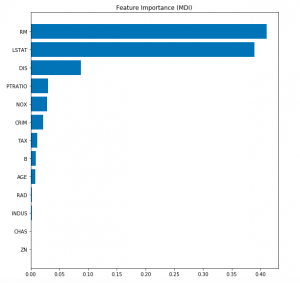
In this post, you will learn about the concepts of Gradient Boosting Regression with the help of Python Sklearn code example. Gradient Boosting algorithm is one of the key boosting machine learning algorithms apart from AdaBoost and XGBoost. What is Gradient Boosting Regression? Gradient Boosting algorithm is used to generate an ensemble model by combining the weak learners or weak predictive models. Gradient boosting algorithm can be used to train models for both regression and classification problem. Gradient Boosting Regression algorithm is used to fit the model which predicts the continuous value. Gradient boosting builds an additive mode by using multiple decision trees of fixed size as weak learners or …
Data Quality Challenges for Analytics Projects
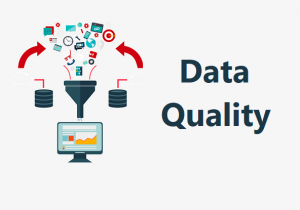
In this post, you will learn about some of the key data quality challenges which you may need to tackle with, if you are working on data analytics projects or planning to get started on data analytics initiatives. If you represent key stakeholders in analytics team, you may find this post to be useful in understanding the data quality challenges. Here are the key challenges in relation to data quality which when taken care would result in great outcomes from analytics projects related to descriptive, predictive and prescriptive analytics: Data accuracy / validation Data consistency Data availability Data discovery Data usability Data SLA Cos-effective data Data Accuracy One of the most important …
Data Science vs Data Engineering Team – Have Both?
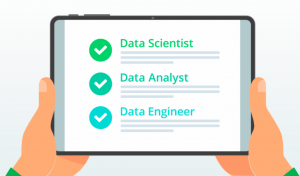
In this post, you will learn about different aspects of data science and data engineering team and also understand the key differences between them. As data science / engineering stakeholders, it is very important to understand whether we need to have one or both the teams to achieve high quality dataset & data pipelines as well as high-performant machine learning models. Background When an organization starts on the journey of building data analytics products, primarily based on predictive analytics, it goes on to set up a centralized (mostly) data science team consisting of data scientists. The data science team works with the product team or multiple product teams to gather the …
500+ Machine Learning Interview Questions

This post consists of all the posts on this website in relation to interview questions / quizzes related to data science / machine learning topics. These questions can prove to be helpful for the following: Product managers Data scientists Product Managers Interview Questions Find the questions for product managers on this page – Machine learning interview questions for product managers Data Scientists Interview Questions Here are posts representing 500+ interview questions which will be helpful for data scientists / machine learning engineers. You will find it useful as practise questions and answers while preparing for machine learning interview. Decision tree questions Machine learning validation techniques questions Neural networks questions – …
Spacy Tokenization Python Example

In this post, you will quickly learn about how to use Spacy for reading and tokenising a document read from text file or otherwise. As a data scientist starting on NLP, this is one of those first code which you will be writing to read the text using spaCy. First and foremost, make sure you have got set up with Spacy, and, loaded English tokenizer. The following commands help you set up in Jupyter notebook. Reading text using spaCy: Once you are set up with Spacy and loaded English tokenizer, the following code can be used to read the text from the text file and tokenize the text into words. Pay attention …
Top 10 Types of Analytics Projects – Examples

In this post, you will learn about some of the most common types of data analytics projects which can be executed by the organization to realise associated business value from analytics projects and, also, gain competitive advantage with respect to the related business functions. Note that analytics projects are different from AI / ML projects. AI / ML or predictive analytics is one part of analytics. Other types of analytics projects include those related with descriptive and prescriptive analytics. You may want to check out one of my related posts on difference between predictive and prescriptive analytics. Here are the key areas of focus for data analytics projects: Cost reduction: …
Predictive vs Prescriptive Analytics Difference
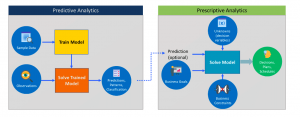
In this post, you will quickly learn about the difference between predictive analytics and prescriptive analytics. As data analytics stakeholders, one must get a good understanding of these concepts in order to decide when to apply predictive and when to make use of prescriptive analytics in analytics solutions / applications. Without further ado, let’s get straight to the diagram. In the above diagram, you could observe / learn the following: Predictive analytics: In predictive analytics, the model is trained using historical / past data based on supervised, unsupervised, reinforcement learning algorithms. Once trained, the new data / observation is input to the trained model. The output of the model is prediction in form …
Negative Binomial Distribution Python Examples

In this post, you will learn about the concepts of negative binomial distribution explained using real-world examples and Python code. We will go over some of the following topics to understand negative binomial distribution: What is negative binomial distribution? What is difference between binomial and negative binomial distribution? Negative binomial distribution real-world examples Negative binomial distribution Python example What is Negative Binomial Distribution? Negative binomial distribution is a discrete probability distribution representing the probability of random variable, X, which is number of Bernoulli trials required to have r number of successes. This random variable is called as negative binomial random variable. And, the experiment representing X number of Bernoulli trials required to product r successes is called …
NLTK – How to Read & Process Text File
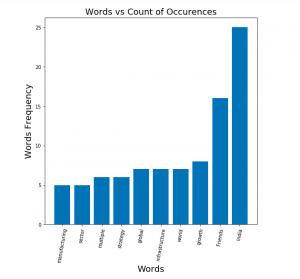
In this post, you will learn about the how to read one or more text files using NLTK and process words contained in the text file. As data scientists starting to work on NLP, the Python code sample for reading multiple text files from local storage will be very helpful. Python Code Sample for Reading Text File using NLTK Here is the Python code sample for reading one or more text files. Pay attention to some of the following aspects: Class nltk.corpus.PlaintextCorpusReader reader is used for reading the text file. The constructor takes input parameter such as corpus root and the regular expression representing the files. List of files that are read could be found using method such as fileids List …
Geometric Distribution Explained with Python Examples

In this post, you will learn about the concepts of Geometric probability distribution with the help of real-world examples and Python code examples. It is of utmost importance for data scientists to understand and get an intuition of different kinds of probability distribution including geometric distribution. You may want to check out some of my following posts on other probability distribution. Normal distribution explained with Python examples Binomial distribution explained with 10+ examples Hypergeometric distribution explained with 10+ examples In this post, the following topics have been covered: Geometric probability distribution concepts Geometric distribution python examples Geometric distribution real-world examples Geometric Probability Distribution Concepts Geometric probability distribution is a discrete …
Top 10 Analytics Strategies for Great Data Products
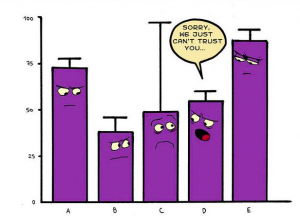
In this post, you will learn about the top 10 data analytics strategies which will help you create successful data products. These strategies will be helpful in case you are setting up a data analytics practice or center of excellence (COE). As an AI / Machine Learning / Data Science stakeholders, it will be important to understand these strategies in order to deliver analytics solution which creates business value having positive business impact. Here are the top 10 data analytics strategies: Identify top 2-3 business problems Identify related business / engineering organizations Create measurement plan by identifying right KPIs Identify analytics deliverables such as analytics reports, predictions etc Gather data …
Keras CNN Image Classification Example
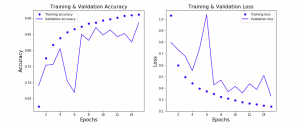
In this post, you will learn about how to train a Keras Convolution Neural Network (CNN) for image classification. Before going ahead and looking at the Python / Keras code examples and related concepts, you may want to check my post on Convolution Neural Network – Simply Explained in order to get a good understanding of CNN concepts. Keras CNN Image Classification Code Example First and foremost, we will need to get the image data for training the model. In this post, Keras CNN used for image classification uses the Kaggle Fashion MNIST dataset. Fashion-MNIST is a dataset of Zalando’s article images—consisting of a training set of 60,000 examples and a …
Data Quality Challenges for Machine Learning Models

In this post, you will learn about some of the key data quality challenges which need to be dealt with in a consistent and sustained manner to ensure high quality machine learning models. Note that high quality models can be termed as models which generalizes better (lower true error with predictions) with unseen data or data derived from larger population. As a data science architect or quality assurance (QA) professional dealing with quality of machine learning models, you must learn some of these challenges and plan appropriate development processes to deal with these challenges. Here are some of the key data quality challenges which need to be tackled appropriately in …
Convolutional Neural Network (CNN) – Simply Explained

In this post, you will learn about the basic concepts of convolutional neural network (CNN) explained with examples. As data scientists / machine learning / deep learning enthusiasts, you must get a good understanding of convolution neural network as there are many applications of CNN. Before getting into the details on CNN, let’s understand the meaning of Convolution in convolutional neural network. What’s Convolution? What’s intuition behind Convolution? Convolution represents a mathematical operation on two functions. As there can be applied different mathematical operations such as addition or multiplication on two different functions, in the similar manner, convolution operation can be applied on two different functions. Mathematically, the convolution of two different …
I found it very helpful. However the differences are not too understandable for me